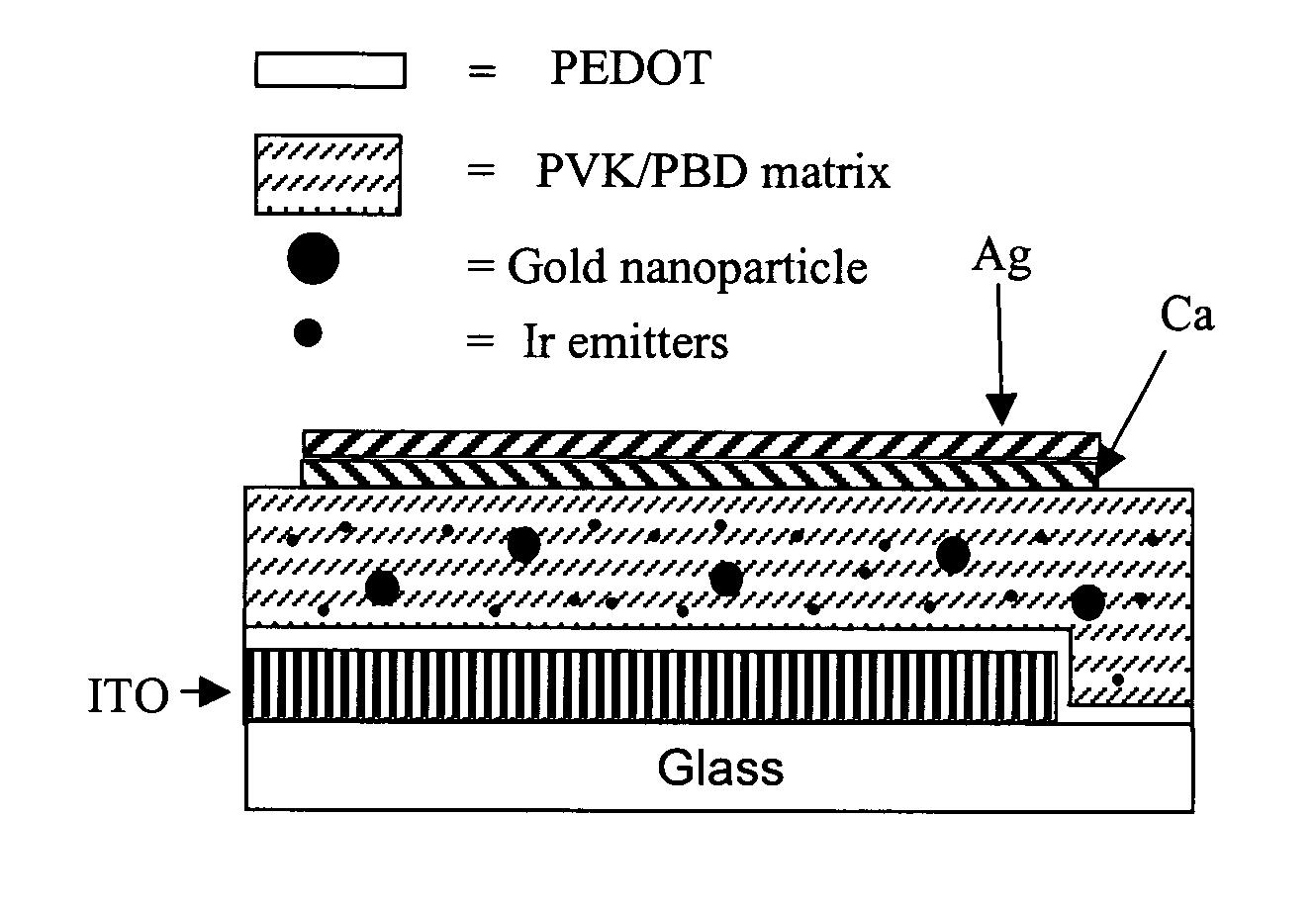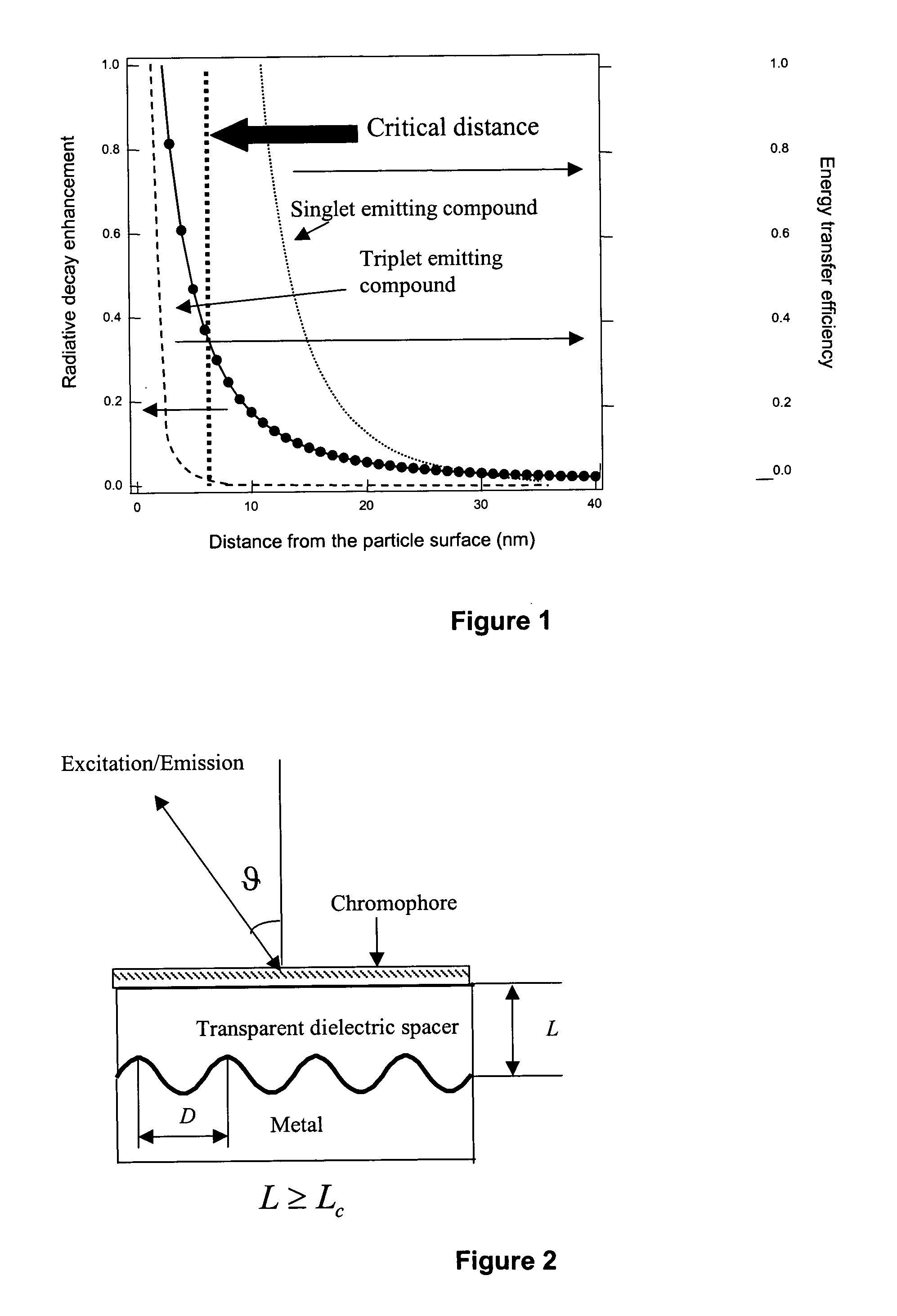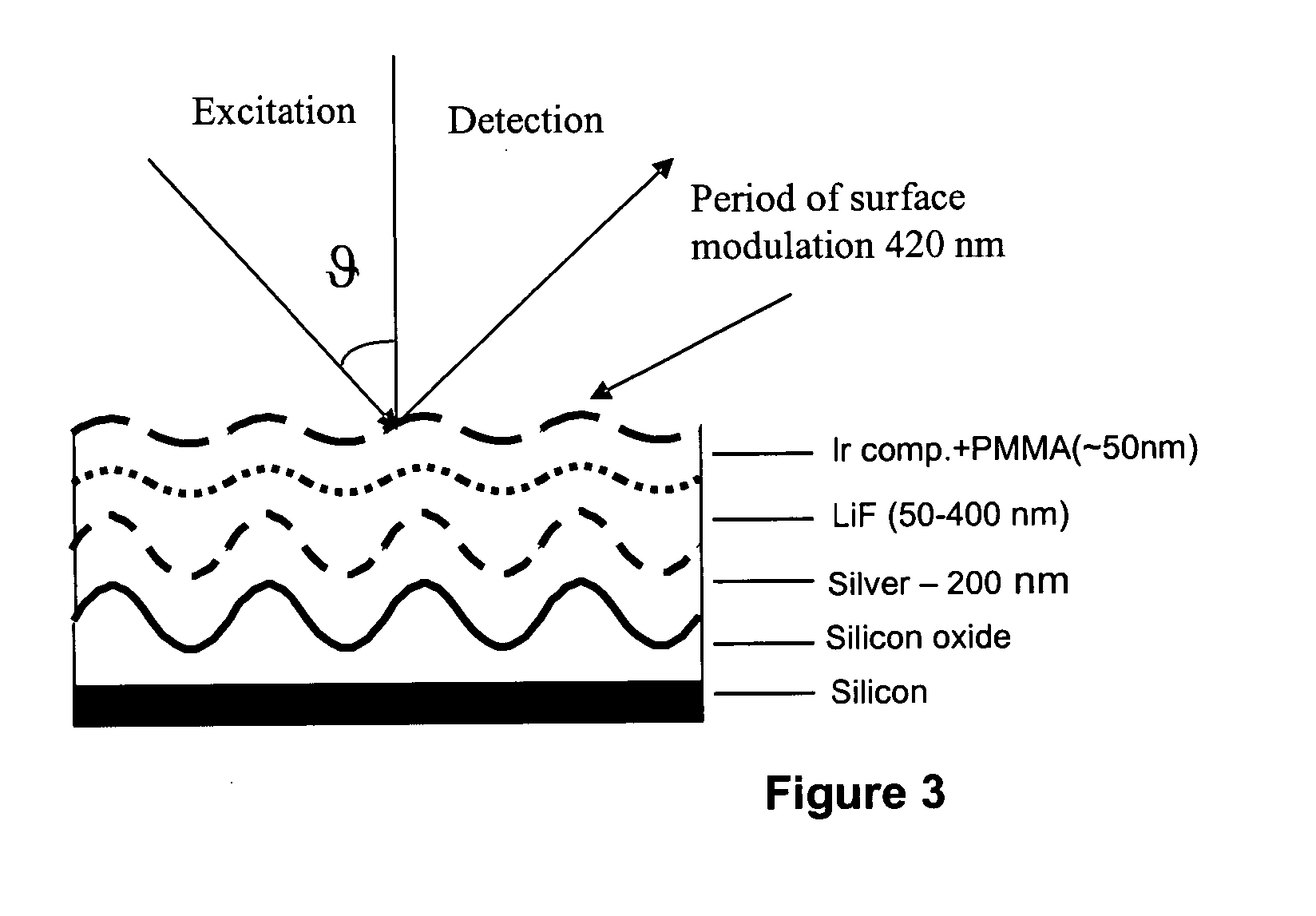Plasmon assisted enhancement of organic optoelectronic devices
a technology of optoelectronic devices and plasmons, which is applied in the direction of solid-state devices, thermoelectric devices, material nanotechnology, etc., can solve the problems of limited performance of leds, low luminescence yield, and small oscillator strengths of radiative transition, and achieve enhanced radiative relaxation, enhanced emission properties, and enhanced effect of plasmon enhancemen
- Summary
- Abstract
- Description
- Claims
- Application Information
AI Technical Summary
Benefits of technology
Problems solved by technology
Method used
Image
Examples
example 1
FIG. 3 depicts a planar metal structure with periodic modulation and dielectric spacer layer separating a metal surface and chromophore. It shows the layout of a planar periodic structure designed and constructed to demonstrate surface plasmon-assisted acceleration of radiative processes in triplet chromophores. The structure comprises a silver grating coated with a lithium fluoride, LiF, layer of variable thickness and a layer of iridium triplet emitter on top. The substrate was made by oxidizing a silicon wafer and then introducing a holographic grating with a 440 nm periodic structure and an amplitude of 70 nm, by photolithographic means. On this grating, a 200 nm sliver film was formed by e-beam deposition techniques. To avoid oxidation of the silver surface, substrates were placed under a nitrogen atmosphere before e-beam deposition of LiF films. The LiF thickness varied between 2-400 nm to change the average distance between the chromophores and the silver surface and to find ...
example 2
In this example, gold colloidal nanoparticles were embedded in OLEDs in order to enhance device efficiency and increase the saturation threshold of triplet emitters under a large charge injection rate.
Au nanoparticles were synthesized according to Brust et al. HAuCl4 in H2O (15 mL) was added into a reaction vessel. To this tetra octyl ammonium bromide (TOABr) in 40 mL toluene was added and stirred for 20 minutes. Dodecylthiol was added subsequently to serve as a capping agent and to provide a spacer layer of organic molecules around the nanoparticle's core and prevent non-radiative emission quenching. After an additional 20 minutes of stirring, NaBH4 was added, the reaction mixture turned black, and this was stirred for an additional 1.5 hours. The aqueous phase was removed and the organic phase was washed with 1 M H2SO4, concentrated sodium bicarbonate, and dried with sodium sulfate. The particles were precipitated with methanol, MeOH, and the suspension was centrifuged to colle...
PUM
 Login to View More
Login to View More Abstract
Description
Claims
Application Information
 Login to View More
Login to View More - R&D
- Intellectual Property
- Life Sciences
- Materials
- Tech Scout
- Unparalleled Data Quality
- Higher Quality Content
- 60% Fewer Hallucinations
Browse by: Latest US Patents, China's latest patents, Technical Efficacy Thesaurus, Application Domain, Technology Topic, Popular Technical Reports.
© 2025 PatSnap. All rights reserved.Legal|Privacy policy|Modern Slavery Act Transparency Statement|Sitemap|About US| Contact US: help@patsnap.com



